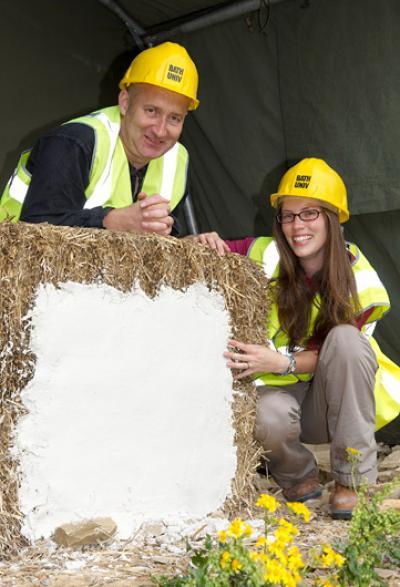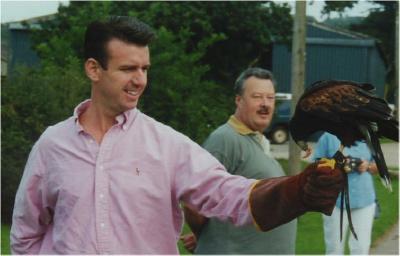By the time he got to the third little pig, who built his house of brick, the wolf got his comeuppance, but it still wasn't a great result for the progessive, environmentally-conscious first one.
Researchers at the University of Bath say straw in housing has gotten a bad rap and to prove it they are making a "BaleHaus" of prefabricated straw and hemp 'cladding' panels.
Have we learned nothing?
Apparently we have to make progress to understand what people knew 2,000 years ago; straw is an environmentally-friendly building material because it is both renewable and a by-product of farming - a hundred years ago people called that 'cheap'. Straw also appeals to 'locally grown' advocates because it isn't worth enough to ship anywhere and it even absorbs carbon dioxide as it grows. Due to its high insulating properties straw homes need almost no conventional heating.
Doesn't that mean it could be blazing hot in the summer with environmentall expensive air conditioning? Perhaps, though our ancestors survived and this is a university project, not something being rolled out by the UK government. Once a few hundred of these are built and farmers start growing straw to make money, the environmental benefit is eliminated, but it's still an interesting idea.
The house is not actually made of straw, which would be kind of a risk for dwellers in the rampant-crime-but-you-can't-own-a-gun UK (2). It is made pre-fabricated wood panels filled with straw (or hemp) and covered with a 'breathable' lime (3).
Dr Katharine Beadle, the principle researcher on the project, explained: "We're putting sensors into the walls to monitor temperature and humidity levels, and using technology to simulate the heat and moisture generated by people."

Professor Pete Walker and Dr. Katharine Beadle of the Balehaus are using straw bales as a low carbon building material. Credit: Nic Delves-Broughton, University of Bath.
Look for the BaleHaus to be completed in the late summer. Then it will be monitored for a year to measure insulation, humidity levels air tightness and sound insulation.
Want to follow along? The Balehaus has its own Strawcam! (you need to download a Microsoft program to use it, though, so they may know houses but they don't know technology)
NOTES:
(1) Kids are apparently too delicate for those stories today so we give them delightful cartoons where no one gets hurt and they all dance together at the end. Oh wait, that's "Return of the Jedi" too.
(2) Not in Bath. Here is a pic of me doing falconry at the farm up the lane from a friend's home there. Criminals don't mess with people who can unleash birds that dive almost 200 MPH at them. Also, the Bath rugby team rules!

(3) They call it 'ModCell' and it is the brainchild of White Design (Bristol) and Integral Structural Design(Bath). Other contributors are Agrifibre Technologies, Lime Technology, Eurban, the Centre for Window&Cladding Technology and Willmott Dixon.





Comments